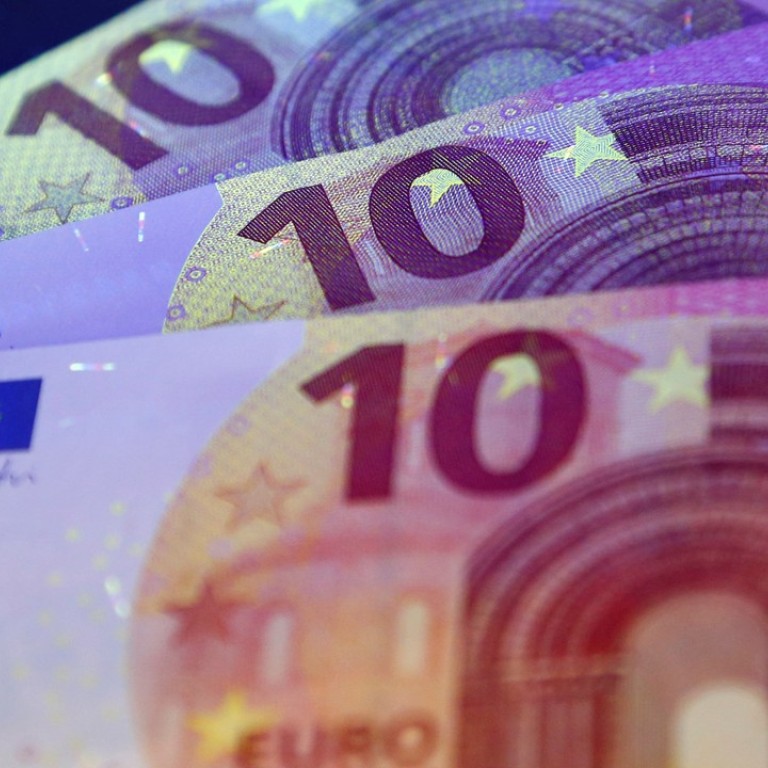
Why 2018 could be the year of the euro
2017 was a good year for the euro. 2018 may prove to be the same. A further appreciation in the value of the euro might not necessarily be what policymakers in the currency bloc have on their wish list for the New Year. Yet a combination of euro tailwinds and US dollar headwinds could nevertheless produce such an outcome.
The problem for euro-zone officials is that while greater demand for the euro reflects renewed investor confidence in the currency, its rise also makes goods imported into the bloc cheaper in local currency terms, complicating the European Central Bank’s efforts to foster inflation that is close to but below 2 per cent.
The euro zone is experiencing a “super-charged economic expansion,” wrote Shweta Singh, director of global macro at London-based TS Lombard in mid-December. That expansion surely owes much to the ECB’s continuing attempts to kick-start inflation via its adherence to ultra-accommodative monetary policy settings.
With the good economic news from the euro zone seemingly broad-based, why wouldn’t investors want a piece of that euro-denominated action?
The flash euro zone composite purchasing managers’ index has “surged to 58.0, the highest since 2011,” TS Lombard wrote, with the manufacturing sector “leading the bounce, strengthening to 60.1 which is the most optimistic reading on record.” With the good economic news from the euro zone seemingly broad-based, why wouldn’t investors want a piece of that euro-denominated action?
ECB monetary policy may now be too loose for the euro-zone economy.
“We would definitely be positive if the ECB would ease up on the very aggressive monetary policy it has right now,” Denmark’s finance minister, Kristian Jensen, said on December 20. “The buying of bonds is very aggressive in my view, especially looking at the condition of the European economy.”
Of course Denmark is outside the euro zone, but with its currency effectively pegged to the euro, Danish monetary policy has to mirror the ECB. Indeed, even though the Danish economy is in an upswing its own benchmark deposit rate is minus 0.65 per cent, with the ECB’s deposit rate at minus 0.4 per cent.
Given the strength of the data, markets may conclude the ECB will have to withdraw monetary accommodation more quickly than is presently expected.
It may be, as Switzerland’s Pictet Wealth Management argues, that “the ECB ‘talks the talk’ in 2018, adjusting its communication in a more hawkish way as the outlook for inflation improves, but does not ‘walk the walk’, as it sticks with the current exit sequencing.”
Or perhaps the ECB will have to go further.
And if a perception in markets develops that the ECB will in some way move sooner rather than later to tighten monetary policy and, more importantly, that such a move would itself underpin the attraction of the euro, market participants will act ahead of time for fear of missing out.
As for the US dollar, what has been noticeable in the last few months of 2017 is that it hasn’t gained too much despite higher US interest rates and the prospect of a tax package, now signed into law by President Trump, which could prompt large-scale repatriation of money currently held offshore by American companies.
Additionally, as Denmark’s Danske Bank noted on December 22, “judging from history, the USD tends to perform relatively poorly when the US fiscal situation is weaker, as the current account weakens.” Indeed, the tax package enacted in Washington last week is expected to add to the US national debt over the next decade.
A general headwind for the greenback could result in a specific tailwind for the euro
There’s also the possibility that with new tax legislation now on the US statute book the currency market may start to see Trump as a “can do” president rather than as one who has struggled to get his agenda implemented.
As Trump has railed against what he sees as unfair international trade practices adversely affecting American manufacturers, the currency market might deliver a yet weaker US dollar assuming a “can do” Trump administration would have no objection given that would boost US manufacturing competitiveness.
Broad weakness in the greenback might well, as previously, encourage central banks in Asia to lean against local currency appreciation through renewed reserve accumulation, subsequently triggering euro-supportive diversification flows. A general headwind for the greenback could result in a specific tailwind for the euro.
France’s Societe Generale, writing on December 14 and noting a recent rise in world foreign-exchange reserves, feels “the global foreign reserves revival is a fundamental tailwind for EUR/USD” given that the euro “has established itself firmly as the second global reserve currency.”
2018 may be a year where the euro remains in the ascendant over the US dollar.

